Contact
|
Los Alamos Science Archive
Issue: 1-5 | 6-10 | 11-15 | 16-20
| 21-25 | 26-30
<< Previous Page | Next Page >>
| Challenges in Plutonium Science |
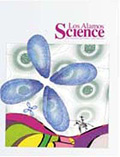
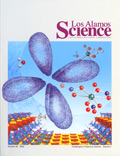 |
Plutonium is arguably the strangest element in the periodic table and the most difficult to handle in the laboratory. While its nuclear fission properties were correctly predicted well before it was first produced at the Berkeley cyclotron, its chemical and condensed matter properties still defy understanding, largely due to the anomalous behavior of the 5f electrons. Nevertheless, it plays a prominent role in nuclear weapons and nuclear energy production. Former Director Sig Hecker opens the volume with the history of plutonium on planet Earth, its use in nuclear weapons and nuclear energy, the challenge of safeguarding weapons-grade plutonium, and efforts to mitigate health and environmental problems resulting from production during the Cold War. The volume goes on to summarize plutonium's condensed matter properties and evidence for its classification as a correlated-electron material. Other topics cover the role of the 5f electrons in producing plutonium's many phases, plutonium aging, plutonium metallurgy, plutonium chemistry, environmentally-conscious plutonium processing, and long-term deposition of nuclear waste at Yucca Mountain.
Go to Table of Contents |
| Information, Science, and Technology in a Quantum World |
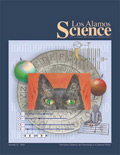 |
A single atom or photon can exist in a superposition of two different states, just as a sound wave can be composed of different frequencies. At LANL's Quantum Institute, the wave-particle duality of individual quanta is being exploited to develop new information technologies including quantum cryptography, quantum computing, and quantum entanglement and teleportation. Research at the Quantum Institute also encompasses studies of Bose Einstein condensates, states in which many atoms condense into a single coherent, macroscopic state, and pioneering work on the theory of quantum decoherence, the transition of a physical system from quantum to classical behavior.
Go to Table of Contents |
| Celebrating 60 Years |
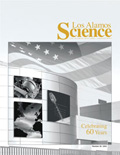 |
This 60th anniversary review of LANL features the Laboratory's three overarching thrusts: nuclear weapons stockpile stewardship-a decade-long effort to develop the scientific base to certify the US stockpile in the absence of nuclear testing; threat reduction-a historic mission that includes assuring nonproliferation of nuclear weapons, reducing the threat of biological and chemical attacks, and insuring homeland security; and finally, strategic investments in the science of the future-an ongoing program to foster new ideas and integrate them into practical solutions for national security, energy independence, and economic stability.
Go to Table of Contents
|
| Science-Based Prediction for Complex Systems |
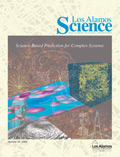 |
Improving predictive capability is an implicit goal in the major missions of Los Alamos National Laboratory: simulating performance of weapons in the stockpile, quantifying uncertainties in those simulations, and developing strategies to mitigate global threats. Success in achieving this goal depends on closely coordinating theory, experiment, and computer simulation. The latest issue of Los Alamos Science presents examples from across the Laboratory.
Go to Table of Contents
|
| LANSCE into the Future |
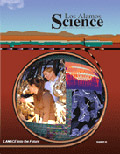 |
Stretching out along the mesa from west to east is the half-mile long linear acceleartor, the heart of LANSCE. This high-intensity proton accelerator powers LANSCE's many experimental facilities including the Lujan Neutron Scattering Center and the Weapons Neutron Research (WNR) Facility. In the last five years, LANSCE's contributions to national security have become increasingly important, including proton radiography movies of dynamic events, nuclear data on short-lived isotopes, and materials science data for determining weapon component lifetimes. During the same period, the number of external users contributing to international science has nearly tripled.
Go to Table of Contents |
<< Previous Page | Next Page >>
Issue: 1-5 | 6-10 | 11-15 | 16-20
| 21-25 | 26-30
|
Latest Issue
Recent Issues
|
